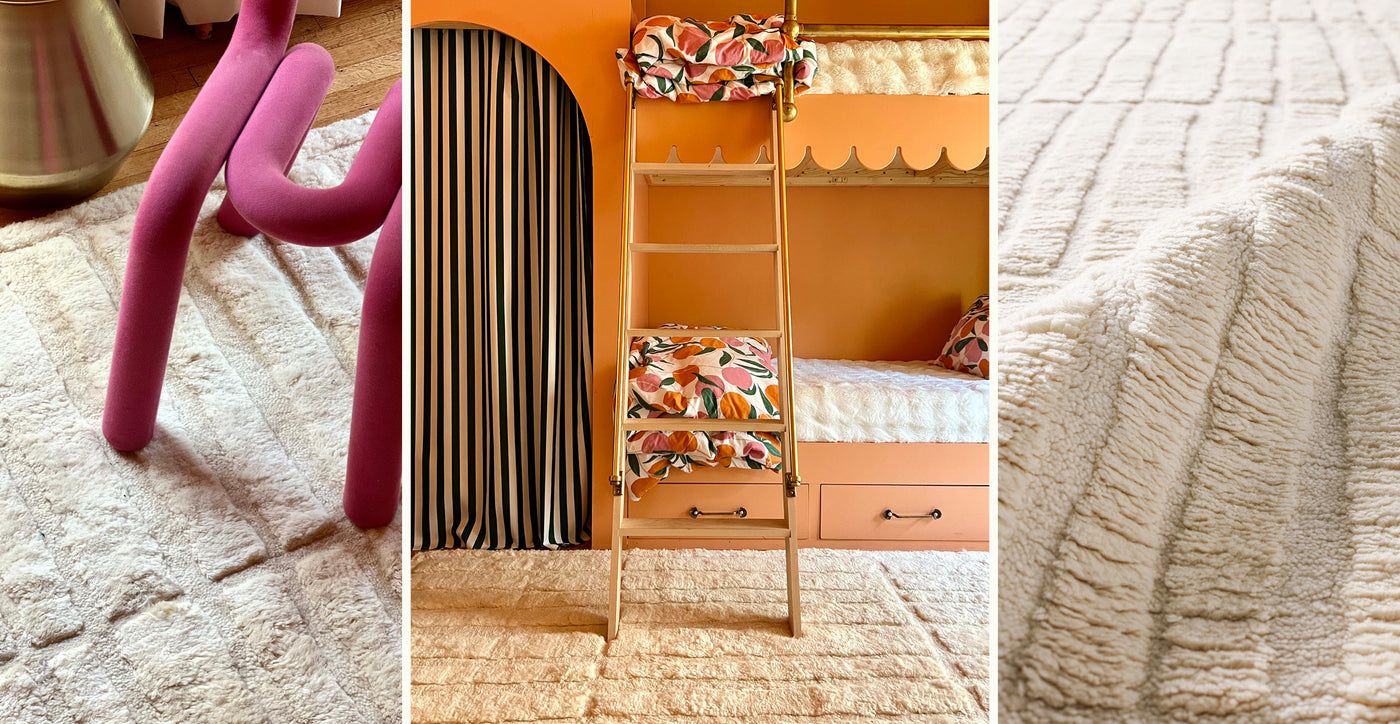What is your philosophy when it comes to design? To you, what makes a house a home?
With residential design, there are really only two major considerations when designing a home: 1) the architecture of the home, and 2) the style of the home’s residents. I think it is important to honor the architecture of a home when designing its contents. That isn’t to say that modern pieces don’t have a place in a Victorian or that antiques don’t belong in a mid-century ranch, but I do think it’s important to “listen” to the architecture and let it guide you.
What truly makes a house a home is when the client, or home’s residents, love the home they’re living in. I don’t believe in blindly following trends or designing with resale in mind. Designing interiors is all about finding our personal style and allowing our homes to be a reflection of ourselves and our families.

What role does a rug play in people’s homes?
They say, “the rug makes the room” and I couldn’t agree with this more. Whether your walls are stark white or draped in patterned wallpaper, the rug plays the most important supporting role in a room. In fact, I think a rug is such an important element that I almost always choose the rug first in a space. A good rug is an investment, and it is also often the focal point of a room, so I always encourage clients to not skimp on their rug purchases. A cheap rug makes the entire room look cheap, but a high quality rug can elevate the design of a room more than any other single element.
When looking for the perfect rug, what key characteristics do you consider?
The three things I consider when choosing a rug are scale, quality, and style. I think many, many people opt for rugs that are too small for their spaces, and this is something I see time and time again with my clients. When unsure, opt for the larger size. I almost never see a rug that is too large for a room, but I often see rugs that are far too small. The second thing is quality. If in a client’s budget, I always encourage them to purchase handmade over machine-made rugs. They last longer, and look better. The third consideration is the style of the rug which, of course, depends on the client’s tastes. I think a rug doesn’t have to be bold or loud to make a room, and I often choose rugs for my own spaces that feel wonderful underfoot and have an understated elegance to allow some bolder elements in the room to steal the eye.

Why did you choose the Parvati rug for this room? What made you gravitate towards this rug?
Josie’s room (our six year-old) is very, very bold. It is, arguably, the most bold and eye-catching room in our entire home. I think the Parvati complements the bold, color-drenched walls, bed and ceiling so beautifully and it feels absolutely divine underfoot. Despite its neutral palette, it’s far from boring with its undulating lines and plush pile. It’s perfect for Josie and her friends to play on, too.
When designing spaces where do you find inspiration?
Everywhere, but especially while traveling. I think designers and artists are always soaking in the world around them, and the art and designs they create are really an expression of how they’ve digested the stimuli around them. Personally, whether it is checking out local landscapes and buildings, or travelling somewhere far and exotic, I am always processing the visual world around me.

You’re a mix master when it comes to patterns and textures. What colors/patterns, textures and décor do you find yourself drawn to at the moment?
I for sure have a stripes obsession and it’s taken me a while to even notice that the majority of pieces I have been picking up are striped. I find the stripe to be just the right amount of bold, while still being classic. Burl wood, bold marbles, plush materials, but also organic and woven materials like straw and rattan are really speaking to me at the moment. I think it’s really all about the mix, and the best spaces mix these organic elements with bolder patterns and textures in a way that feels both unexpected and seamless.

When designing a room for kids, what is important to keep in mind?
I see a lot of nurseries and kids spaces lately that are completely neutral, using very little pattern, texture and are, overall, quite minimalist. While I love a good minimalist room just as much as the next person, I think it’s important to keep in mind that kids need visual and tactile stimulation to develop their creative senses. How often do we see young kids drawing pictures using only the black, cream and white crayons? Color and texture are food for a kid’s soul, and it’s important to keep that in mind while designing their spaces. This isn’t to say there isn’t room for neutral elements, but I do think we need to be mindful and intentional about how we incorporate such pieces in children’s spaces.
